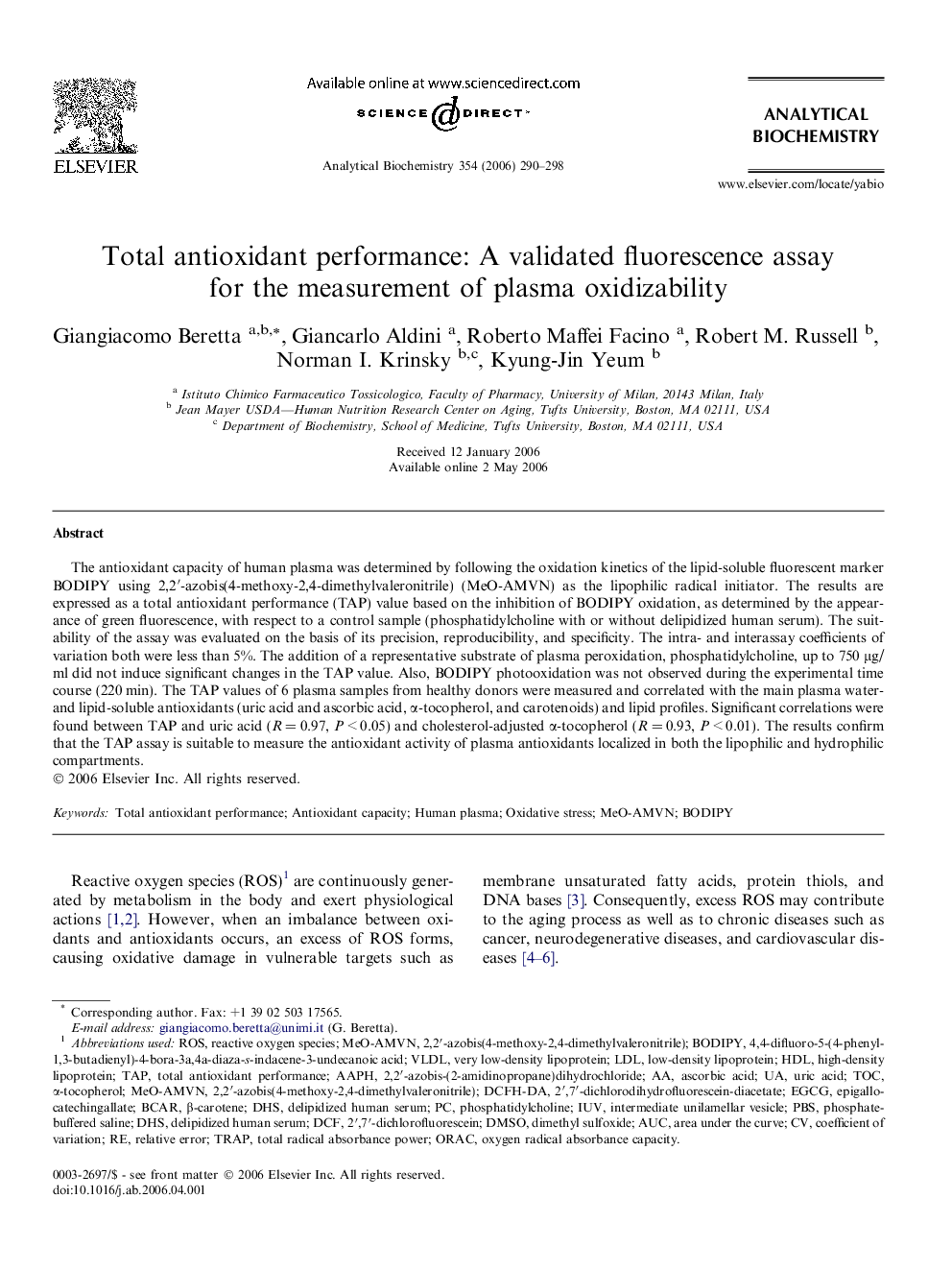| کد مقاله | کد نشریه | سال انتشار | مقاله انگلیسی | نسخه تمام متن |
|---|---|---|---|---|
| 1176033 | 961828 | 2006 | 9 صفحه PDF | دانلود رایگان |

The antioxidant capacity of human plasma was determined by following the oxidation kinetics of the lipid-soluble fluorescent marker BODIPY using 2,2′-azobis(4-methoxy-2,4-dimethylvaleronitrile) (MeO-AMVN) as the lipophilic radical initiator. The results are expressed as a total antioxidant performance (TAP) value based on the inhibition of BODIPY oxidation, as determined by the appearance of green fluorescence, with respect to a control sample (phosphatidylcholine with or without delipidized human serum). The suitability of the assay was evaluated on the basis of its precision, reproducibility, and specificity. The intra- and interassay coefficients of variation both were less than 5%. The addition of a representative substrate of plasma peroxidation, phosphatidylcholine, up to 750 μg/ml did not induce significant changes in the TAP value. Also, BODIPY photooxidation was not observed during the experimental time course (220 min). The TAP values of 6 plasma samples from healthy donors were measured and correlated with the main plasma water- and lipid-soluble antioxidants (uric acid and ascorbic acid, α-tocopherol, and carotenoids) and lipid profiles. Significant correlations were found between TAP and uric acid (R = 0.97, P < 0.05) and cholesterol-adjusted α-tocopherol (R = 0.93, P < 0.01). The results confirm that the TAP assay is suitable to measure the antioxidant activity of plasma antioxidants localized in both the lipophilic and hydrophilic compartments.
Journal: Analytical Biochemistry - Volume 354, Issue 2, 15 July 2006, Pages 290–298